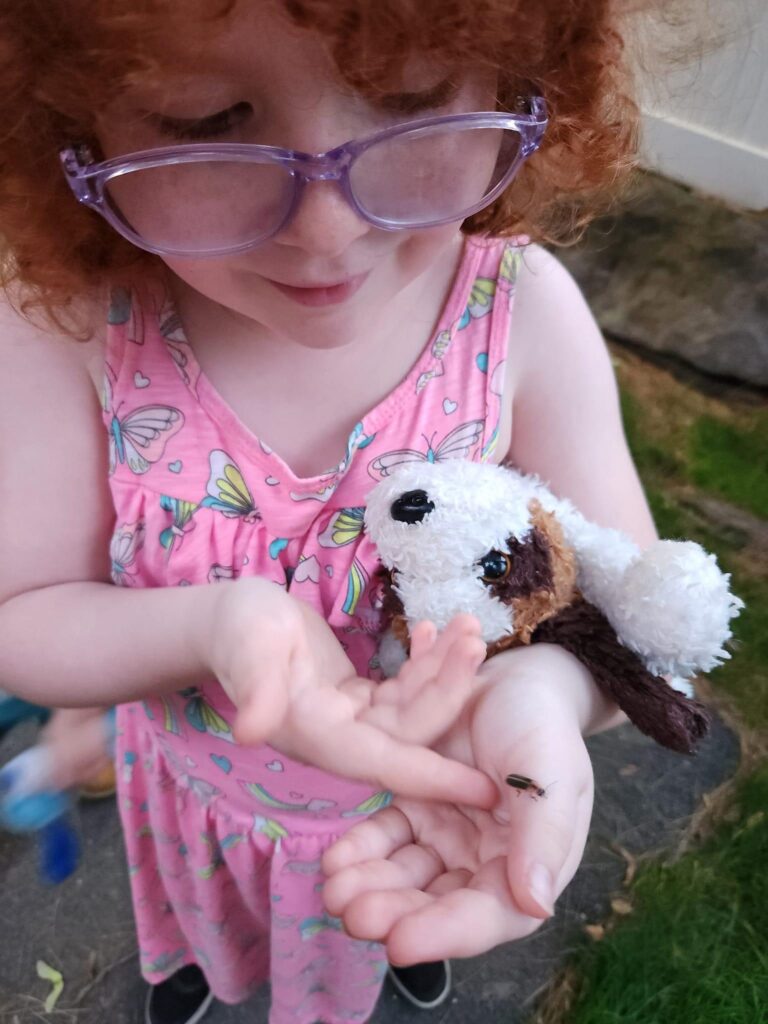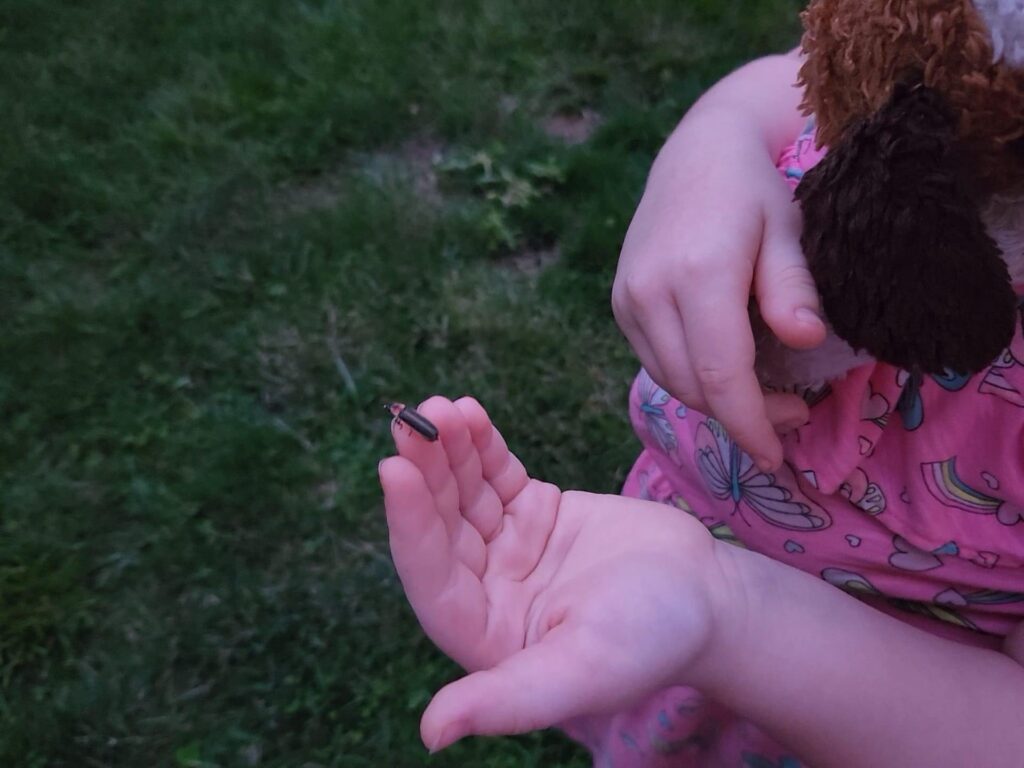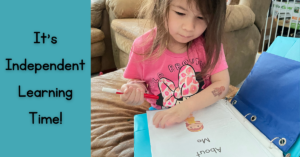When I think about summer as a kid, so many memories come to mind. One of my favorites happened more times than I could possibly count. I was looking outside as the sun went down and noticed some bugs flying near to the ground. As dusk settled, a light would flash, and then another. Soon there’d be lights flashing all around the back yard. I could see the bugs flying around and I would watch and wait for them to light up too, but I’d get distracted by another flash nearby and lose the one I’d been watching.
As the sun continued to set and the world grew darker, the lights seemed to flash brighter and more consistently. Other bugs freaked me out, but not these. These bugs were an adventure. If I was outside, I would try to catch one, then, when the bugs seemed to notice my movement and fly away, I’d slowly move to another area of the yard and try again. It was always a wonder to catch one of these bugs. Like catching my own flashlight, or moonlight in my hand. The moon would be shining above, but I also had a small piece of it with me to look at and admire.
I know that many kids would find a jar, fill it with one or more, and take their treasures indoors, but I don’t think I ever did that. Even if they were special and fascinating, they were still bugs and belonged outdoors. And I think keeping them outside helped to retain the mystery of it all. I didn’t know how that acted in the light. Did they fly around but I didn’t notice them? Or were they nocturnal creatures that only came out at night? That was the mystery of fireflies, the little lightning bugs that showed up without fail on warm summer evenings.
Social and Emotional Learning Lessons from Fireflies
You might think that fireflies are a science lesson just waiting to happen as you teach your kids about their diets, anatomy, life cycle, and more. Or maybe it’s part of physical education if you’re lucky enough to have them nearby and can let your kids run around and try to catch them. But I encourage you to also include lessons to encourage your kids’ social and emotional learning.
There are a ton of social and emotional learning lessons that fireflies can teach us. Patience, mindfulness, appreciating differences, and teamwork are just a handful of the social and emotional learning lessons from fireflies. Here are some ideas on ways to focus on each lesson in your homeschool.

Patience
If you live in a place with fireflies, you likely have already experienced this lesson for yourself or your kids on occasion. Wanting to see the fireflies and impatiently waiting to see a little glow light up from the yard. It’s not that fireflies take a particularly long time to come out and begin their nightly rituals, but instead, the excitement, anticipation and eagerness to see the magic of fireflies lighting the night can make us impatient.
I don’t think I’ve seen any fireflies at my house since moving in, but that doesn’t prevent me from looking, watching and waiting, wanting to see fireflies here.
Fireflies provide a good lesson in patience. Whether the lesson is in waiting for the right time of year and for the temperatures to warm enough for fireflies to appear, or waiting through the hours of the day for it to get dark enough to spot their glow, your children will need to choose between patience and impatience. As you wait, you can talk about fireflies (the beauty or the science). You can find some coloring pages or a coloring book, or allow your kids to draw or paint their interpretations of fireflies in nature. Together with your children you can prepare a jar with holes in the lid so they’re ready to catch some fireflies for observation.
Mindfulness
Once you’ve been patient enough for the fireflies to appear, and likely after your kids have had a chance to chase them around the yard as they try to catch them all, it’s time for mindfulness. Although mindfulness is often associated with meditation, I like to think of it more as taking the time to be quietly aware of your surroundings, how you feel inside and out, and your thoughts in the moment, without judgment. You can experience mindfulness anywhere, but nature and nighttime often seem to encourage mindfulness more than other environments.
Whether you and your kids are standing in your yard, sitting on your porch, or looking out a window into the night, take time to pause and just exist in nature. We live in a humongous world and we only see a small portion of it. When fireflies appear, they bring with them another piece of the great expanse. Take a big breath and appreciate the opportunity to be part of the experience. There is so much beauty in the world around us and that beauty comes in all shapes and sizes.
When you’re back indoors, or feel like you’ve taken enough time for mindfulness, talk to your kids about how it makes them feel. Do they feel differently? Do they feel calmer? Is quiet time in nature something that they enjoyed and would like to do again? Maybe they kept thinking about chasing the fireflies or kept talking instead of quietly appreciating nature – that’s ok! Mindfulness doesn’t come naturally to everyone, especially not our kids that are growing up in a world of instant everything. If mindfulness is something you want to share with your kids, it’s worth trying again. You can start small and build up the time as your kids get used to it.

Appreciating Differences
Fireflies are quite obviously different from other bugs. The fact that they light up the darkness makes them unique. Not only are they different from other bugs, but they’re also different from themselves! There are 2400 different types of fireflies… yeah, that number just blew my mind. What about yours?
Just as we appreciate fireflies for their differences, it’s important to teach our kids to appreciate the differences between them and others, and between all people in general. You can tell some differences by looking at another person – maybe they wear glasses, or they’re taller or shorter, or you can see that they’re a boy or a girl. There are other differences that you may not be able to see just by looking – they could be deaf, or speak another language, or they were raised on a farm or in the city.
The most important thing is that we teach our kids that it’s ok to be different. They don’t need to be the same as everyone else, but they also shouldn’t make fun of or judge other people for their differences. Some differences can be sore spots for people because they’re visible and cause them to stand out, such as albinism or port wine stains, so pointing out these differences has the potential to hurt others’ feelings. Though I find that if it’s done with respect and curiosity, and you ask for permission instead of assuming that someone will talk about it, people are usually willing to share about their experiences.
Teamwork
Did you know that there are places in the world where fireflies synchronize their lights? We might not all be able to see this natural wonder without traveling, but luckily we can see it online! Synchronous fireflies flash their lights together to light up the sky or go dark all together. This is a great lesson in teamwork!
These fireflies have a common goal and they work together to make it happen. This is similar to sports teams with the goal of winning the game or to going on a group scavenger hunt with the goal of finding everything on your list. A fun way to show teamwork would be to secretly tell your kids to each sing a different song (even if you only have one child, you can sing a different song), then give a countdown to start singing at the same time. It’ll feel chaotic and they might just stop singing. Talk about their experiences, then choose a song to sing together. Singing together is a form of teamwork that is similar to the synchronous fireflies.

From patience to mindfulness, appreciating differences to celebrating teamwork, social and emotional learning lessons from fireflies abound in nature. They provide what feels like a magical experience when you see them live and provide life lessons when you take the time to learn about them. And I’d bet that most animals and parts of nature will share lessons too if you have a little patience.
Thank you for joining us in our homeschool.

Disclosure: As an Amazon Associate I earn from qualifying purchases. This post may include affiliate links which means I may earn commissions for purchases made while using my link.





This Post Has One Comment
Pingback: What is Social and Emotional Learning? - In Our Homeschool